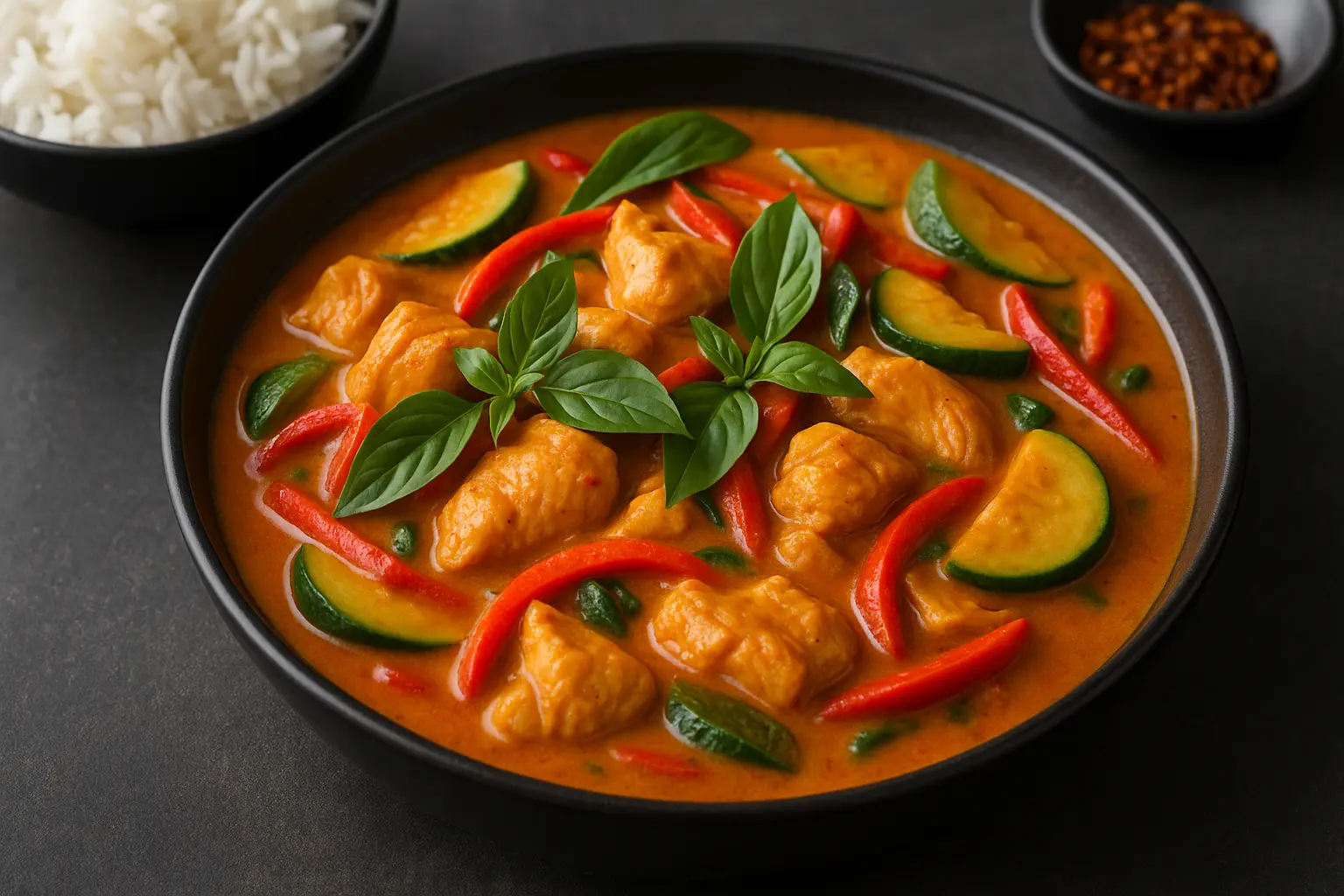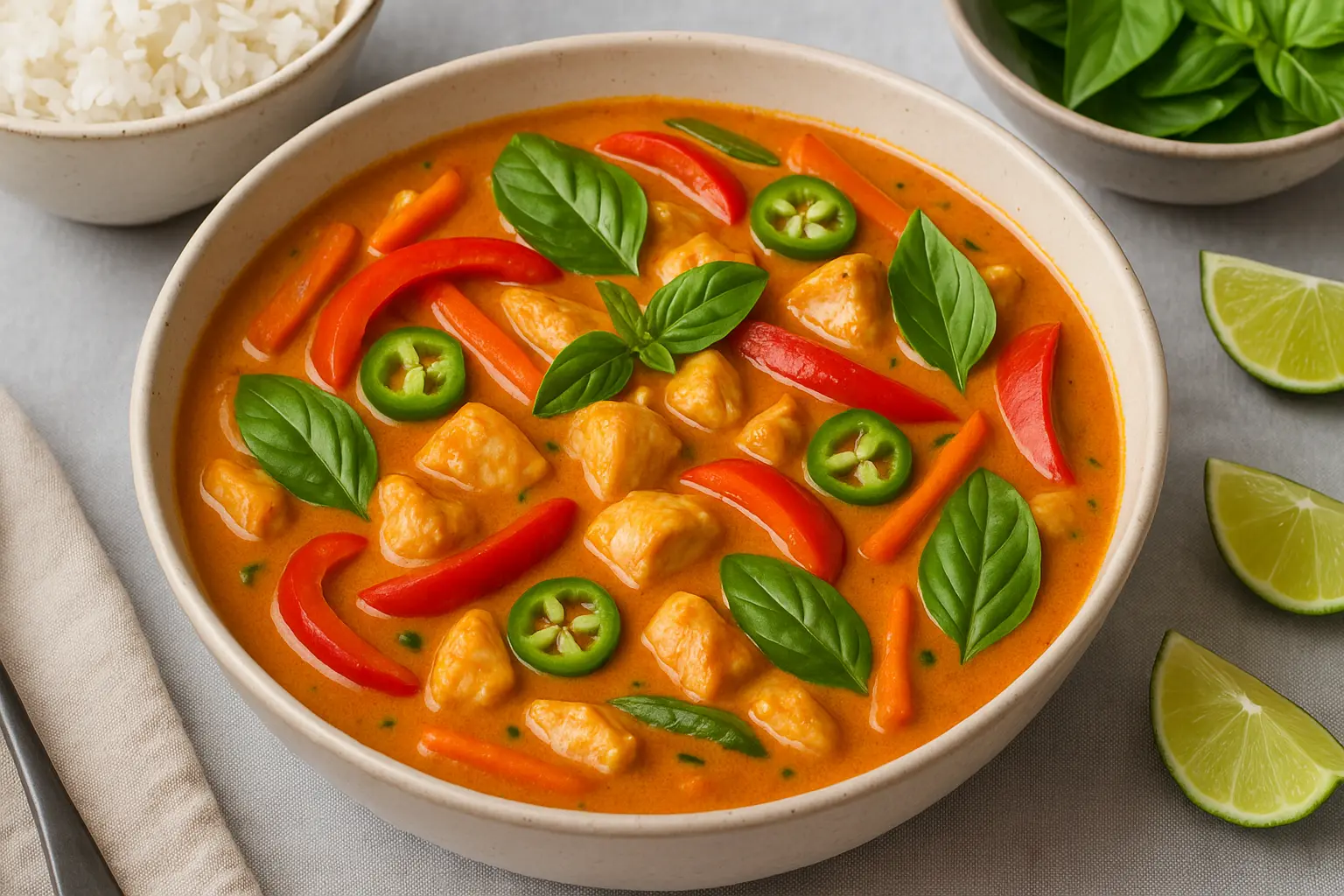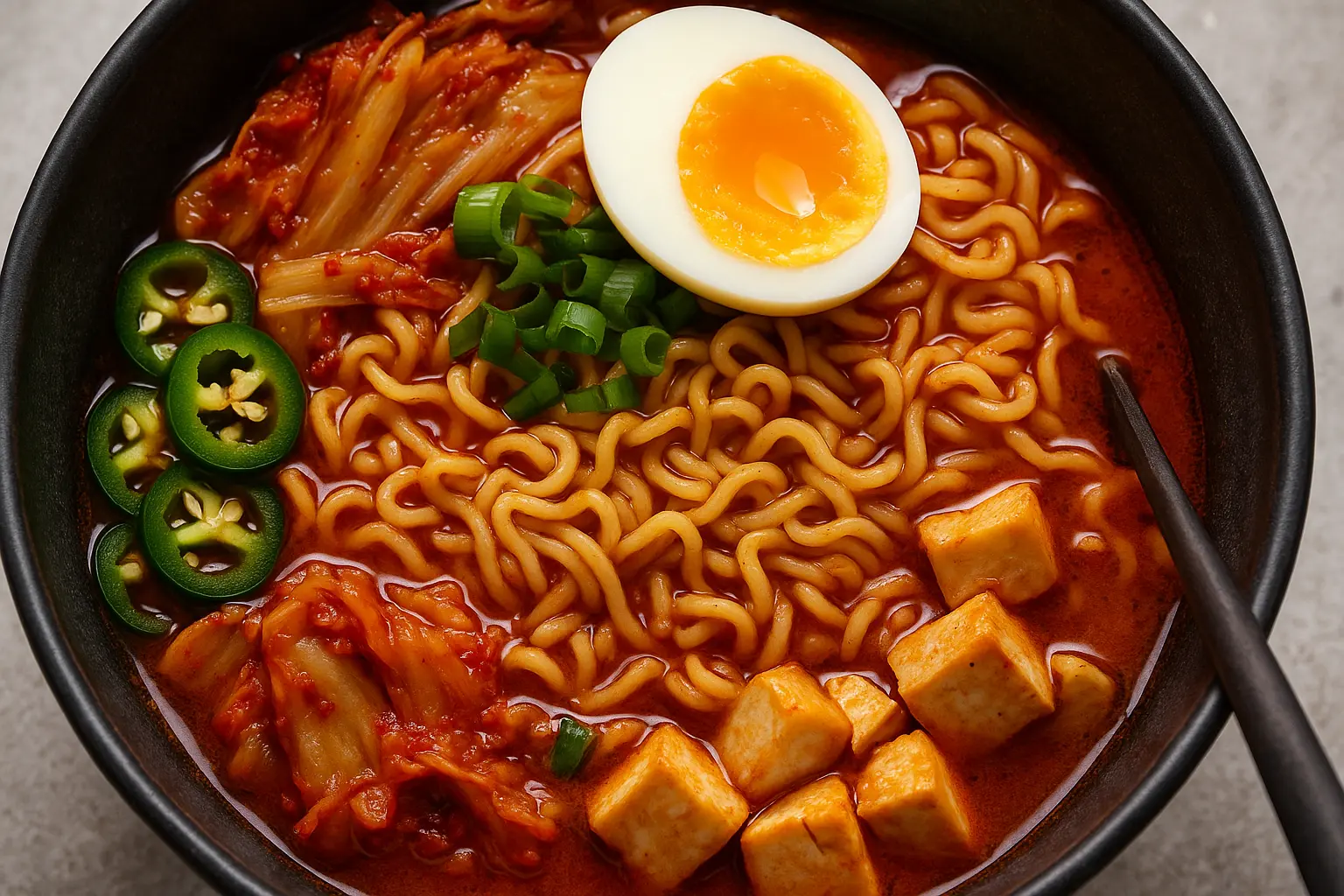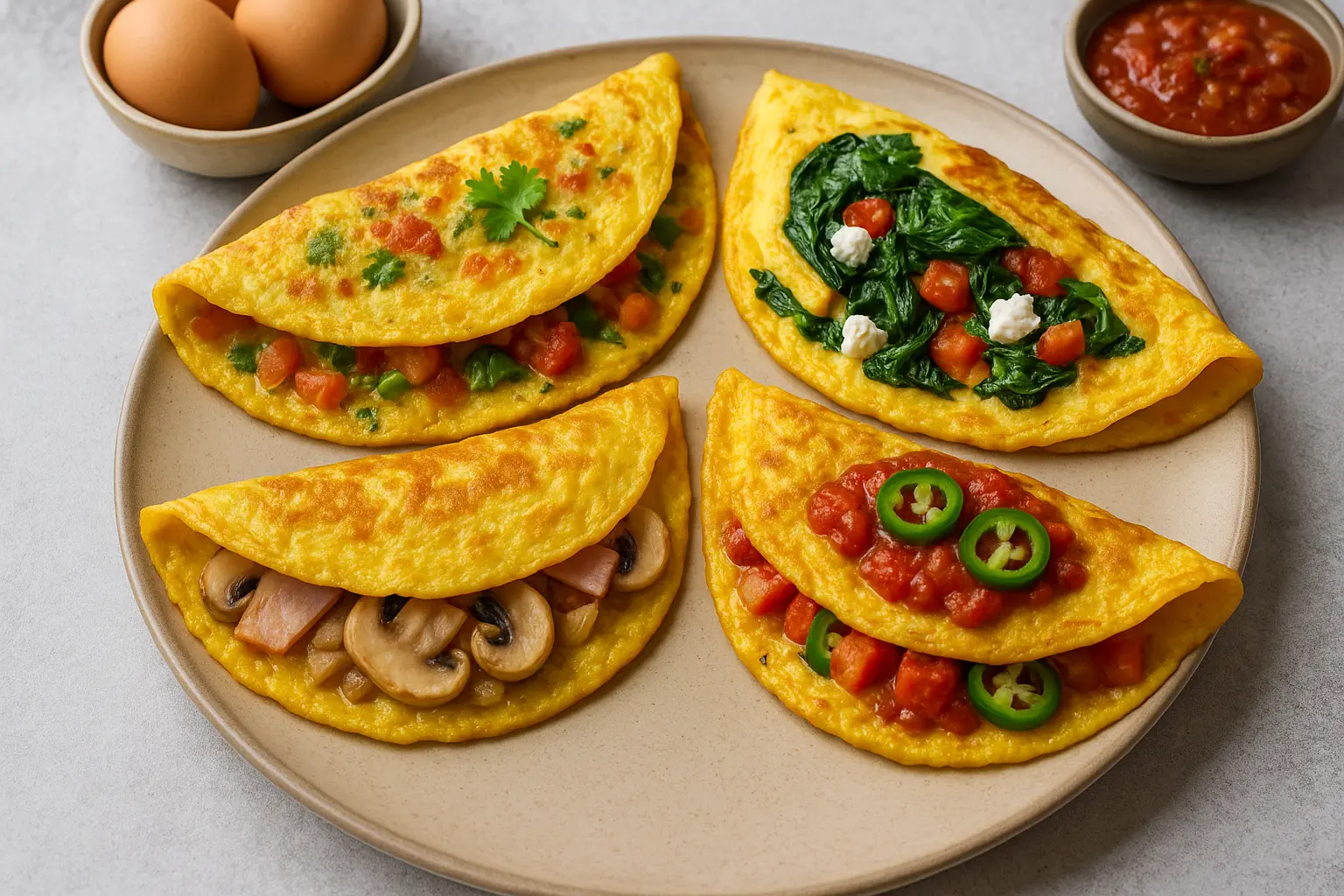Few dishes can rival the comfort, fragrance, and warmth of a Thai curry. Whether you crave the creamy spice of red curry, the earthy green notes of a herb-packed green curry, or the milder, nutty sweetness of yellow curry, Thai cuisine delivers flavor profiles that satisfy both heart and soul.
For many home cooks, making curry often feels like a long and complex process reserved for restaurants or leisurely weekends. But here’s the good news—authentic, delicious Thai curries don’t have to take hours. With the right shortcuts, pantry staples, and a little know-how, you can serve a steaming bowl of curry in just 30 minutes—perfect for busy weeknights.
This guide takes you through everything you need to know about quick Thai curries: the essential ingredients, flavor profiles, time-saving tricks, step-by-step recipes, and tips to adapt them for any dietary preference.

Why Thai Curries Are Perfect for Quick Meals
Unlike Indian curries, which often rely on slow simmering and complex layering, Thai curries focus on fresh aromatics and pre-prepared curry pastes that pack a punch. This makes them ideal for weeknight cooking when you don’t want to compromise flavor for speed.
Key reasons Thai curries make quick meals:
Curry pastes are ready-to-use – Store-bought pastes are authentic and save hours of pounding herbs.
Coconut milk is the base – Smooth, creamy texture achieved in seconds.
Versatile proteins and veggies – Works equally well with chicken, tofu, prawns, or just vegetables.
Minimal prep needed – Chopping a few aromatics and veggies is often the only time investment.
Thai Curry Basics: Understanding the Colors & Flavors
Thai curries are typically grouped into three main categories—red, green, and yellow—though regional variations like Panang or Massaman are equally loved.
1. Red Curry (Gaeng Daeng)
Color & Base: Dried red chilies form the base.
Flavor: Bold, spicy, slightly smoky.
Best For: Chicken, beef, prawns.
2. Green Curry (Gaeng Keow Wan)
Color & Base: Fresh green chilies, Thai basil, and coriander roots.
Flavor: Spicy, herbal, bright.
Best For: Chicken, tofu, fish balls, vegetables.
3. Yellow Curry (Gaeng Karee)
Color & Base: Mild chilies plus turmeric.
Flavor: Warm, slightly sweet, less spicy.
Best For: Potatoes, chicken, chickpeas.
4. Panang Curry
Flavor: Thicker, creamier, peanut undertones.
Best For: Beef or chicken.
5. Massaman Curry
Flavor: Influenced by Indian/Muslim spices; nutty, warming.
Best For: Slow-cooked beef or lamb, but shortcuts work too.
Essential Ingredients for Quick Thai Curries
If you stock these in your pantry, whipping up a curry becomes second nature:
Curry Paste: Red, green, yellow, Panang, or Massaman. Choose Thai brands like Mae Ploy or Maesri for authentic flavor.
Coconut Milk: Full-fat for richness; light versions also work for calorie-conscious meals.
Fish Sauce: Adds salty umami depth.
Palm Sugar (or brown sugar): Balances heat and saltiness.
Fresh Herbs: Thai basil, kaffir lime leaves, coriander.
Veggies: Eggplant, capsicum, carrots, zucchini, broccoli, bamboo shoots.
Protein: Chicken breast, shrimp, tofu, or beef strips.
Rice or Noodles: Steamed jasmine rice or rice noodles for serving.
Time-Saving Tips for 30-Minute Curries
Use ready-made curry paste – The single biggest shortcut.
Prep ingredients beforehand – Chop vegetables and proteins in batches.
Cook rice simultaneously – Start jasmine rice in a rice cooker or Instant Pot while cooking curry.
One-pot cooking – Use a wok or wide saucepan to minimize cleanup.
Batch cook paste – Fry curry paste in oil and freeze in portions for later.
Recipes: Thai Curries in 30 Minutes
Below are step-by-step recipes you can rotate through your weekly meals.
🍛 Quick Thai Red Curry with Chicken
Serves: 4 | Cook Time: 25 minutes
Ingredients:
2 tbsp red curry paste
400ml coconut milk
2 chicken breasts, sliced thin
1 red capsicum, sliced
1 zucchini, chopped
1 tbsp fish sauce
1 tsp brown sugar
Handful of Thai basil leaves
Steamed jasmine rice, to serve
Method:
Heat 1 tbsp oil in a wok. Fry curry paste until fragrant (1–2 minutes).
Stir in coconut milk, bring to simmer.
Add chicken slices, cook for 10 minutes.
Add vegetables, simmer another 5–7 minutes.
Season with fish sauce and sugar.
Stir in Thai basil before serving.
🌿 Thai Green Curry with Tofu & Vegetables
Serves: 4 | Cook Time: 30 minutes
Ingredients:
2 tbsp green curry paste
400ml coconut milk
250g firm tofu, cubed
1 eggplant, diced
1 cup broccoli florets
1 carrot, sliced thin
1 tbsp soy sauce (or fish sauce if not vegan)
Kaffir lime leaves
Thai basil to garnish
Method:
Heat oil, fry curry paste until aromatic.
Add coconut milk and kaffir lime leaves. Simmer.
Add tofu and vegetables; cook 12–15 minutes.
Adjust seasoning with soy sauce.
Serve hot over steamed jasmine rice.
🌞 Thai Yellow Curry with Chickpeas & Potatoes
Serves: 4 | Cook Time: 28 minutes
Ingredients:
2 tbsp yellow curry paste
400ml coconut milk
2 medium potatoes, diced
1 can chickpeas, drained
1 onion, sliced
1 tbsp fish sauce or soy sauce
1 tsp palm sugar
Fresh coriander leaves
Method:
Fry curry paste and onion until fragrant.
Stir in coconut milk, add potatoes. Cook until tender (~15 minutes).
Add chickpeas and simmer for 5 more minutes.
Season with fish sauce and sugar.
Garnish with coriander. Serve with rice.
🥥 Panang Curry with Beef Strips
Serves: 4 | Cook Time: 30 minutes
Ingredients:
2 tbsp Panang curry paste
400ml coconut cream (for richer texture)
250g beef strips
1 red chili, sliced
1 tbsp peanut butter (optional, for nuttier flavor)
1 tbsp fish sauce
Kaffir lime leaves
Method:
Fry curry paste in oil. Add coconut cream gradually.
Stir in beef strips, cook 10–12 minutes.
Add chili slices and peanut butter.
Simmer until beef is tender.
Serve with jasmine rice.
Dietary Adaptations
Vegan/Vegetarian: Replace fish sauce with soy sauce or tamari. Use tofu, tempeh, or chickpeas as protein.
Gluten-Free: Ensure curry paste brand and soy sauce are certified gluten-free.
Low-Carb/Keto: Swap rice for cauliflower rice or zucchini noodles.
High-Protein: Double the protein portion and add lentils or beans.
Pairing Suggestions
Rice: Jasmine rice is classic; brown rice for extra fiber.
Noodles: Rice noodles for a different texture.
Sides: Thai cucumber salad, spring rolls, or papaya salad.
Drinks: Thai iced tea, coconut water, or a light lager beer.
Pro Tips for Restaurant-Style Thai Curries
Bloom curry paste in oil first – Unlocks deeper flavor.
Balance is key – Sweet, salty, spicy, sour should be in harmony.
Use fresh herbs last – Add basil or coriander just before serving.
Simmer, don’t boil – Keeps coconut milk from splitting.
Adjust to your spice tolerance – Add more chilies or tone it down with extra coconut milk.
Common Mistakes to Avoid
Adding herbs too early (they lose fragrance).
Using low-fat coconut milk exclusively (can split and lose creaminess).
Skipping fish sauce—this is the backbone of Thai flavor.
Overcooking vegetables—keep them slightly crisp for texture.
Meal Prep & Storage
Batch cooking: Curries taste better the next day as flavors deepen.
Storage: Refrigerate up to 3 days, freeze up to 3 months.
Reheating: Gently on stovetop with a splash of water or coconut milk.
Conclusion: Bring Thailand to Your Table in 30 Minutes
With these quick curry recipes, you no longer need to wait for takeout or spend hours in the kitchen. Thai curries are all about balance, freshness, and bold flavors—and with just 30 minutes, you can capture that magic in your own kitchen.
So whether it’s a comforting red curry after work, a veggie-packed green curry for Meatless Monday, or a nutty Panang for Friday dinner, you’ve now got a foolproof set of recipes that transform busy nights into delicious feasts.
For more global comfort food recipes, keep exploring RecipeShed.com—your go-to destination for flavorful, easy, and inspiring meals.
Leave a comment
Your email address will not be published. Required fields are marked *




















